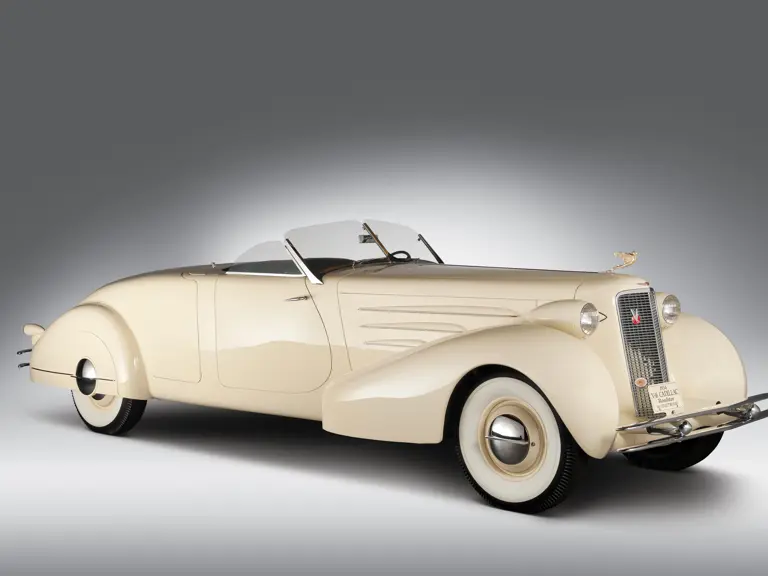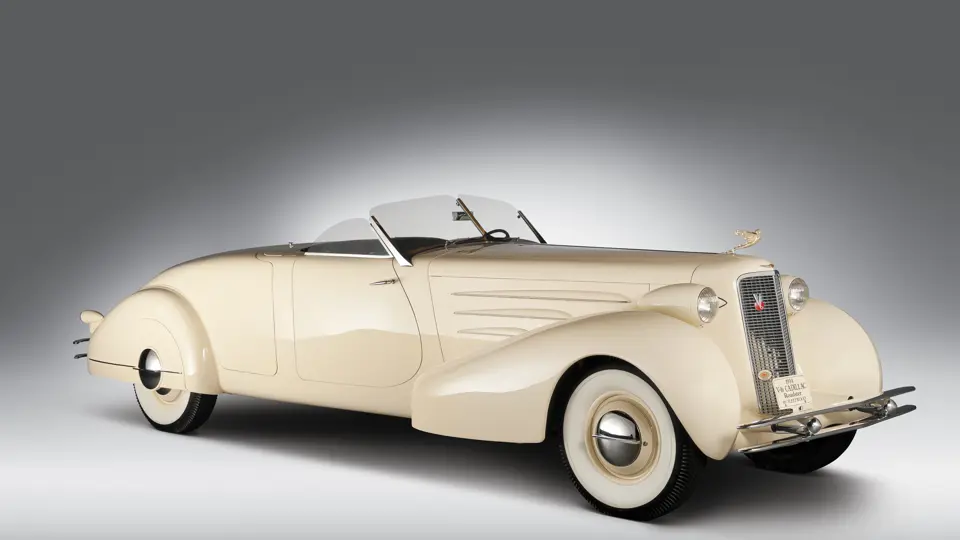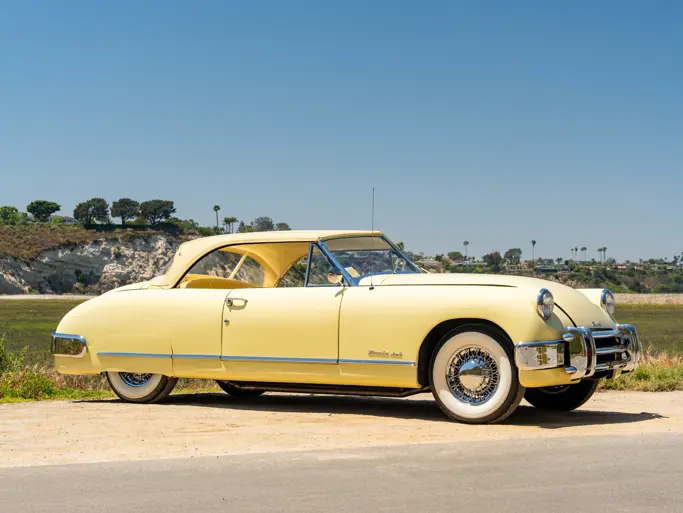Series 452-D. 185 bhp, 452 cu. in. overhead valve V-16 engine, three-speed manual transmission, coil spring independent front suspension, live rear axle with semi-elliptic leaf springs, and four-wheel vacuum-assisted mechanical drum brakes. Wheelbase: 154"
• Original Fleetwood design concept
• Design development by Strother MacMinn and Dave Holls
• Unique rumble seat with side door and disappearing lid
• Craftsmanship by Fran Roxas
One good turn deserves another. In the early 1980s, renowned Chicago-area restorer Fran Roxas built a car that never was. Starting with a rendering in a Cadillac catalog for Fleetwood custom bodies, which showed some innovative styles that could be created for discerning customers, he built a faithful rendition of Style 5859, a sleek dual cowl phaeton. This was no quick job. He turned to Strother MacMinn, an industry veteran stylist and long-time instructor at the prestigious Art Center College of Design in Pasadena, California. MacMinn in turn enlisted David Holls, Head of Advanced Design at General Motors, who produced a set of full-scale chassis blueprints for the Sixteen. Working from the blueprints, MacMinn scaled the catalog rendering up to full size. Constructed on a 1937 Sixteen chassis, it now resides in the Milhous Collection and is also offered in this auction.
By the early 1990s Roxas was restless again. The same catalog had a rendering of a stunning Cadillac Sixteen roadster, identified as Style 5802. As with the phaeton, this style had been illustrated but never built. Roxas again worked with MacMinn and Holls to bring the roadster to life.
The project turned out to be more ambitious than the phaeton, but MacMinn was up to the task. The rendering clearly showed a metal-covered compartment for the lowered top. On the driver’s side was a golf bag door, evidence of a rumble seat. MacMinn devised a rumble seat with a disappearing cover, which slid down behind the seat to become virtually hidden when open. The Sixteen’s generous wheelbase left plenty of room for a luggage compartment, but this made entry to the rumble seat difficult. A series of step plates on the side would have ruined the lines. MacMinn cleverly designed a passenger door in the right side that made the seat easily accessible from ground level.
A low-mileage 1935 Cadillac Sixteen Seven-Passenger Limousine became the chassis donor. The car takes its chassis number from this car, but Roxas favored the more attractive “bi-plane” bumpers of the 1934 Cadillacs. Having proved a bit fragile in ordinary use, they were replaced for 1935 by heavy conventional bar bumpers, the principal distinguishing feature of that year. A show car demanded a finer line of aesthetics, so the aircraft inspired ’34 bumpers were used instead.
Painted a light shade of yellow, the car is very handsome, set off with a dark green leather interior. There is matching green carpet on the floor. Craftsmanship is exceptional throughout and the condition outstanding. The steering wheel is the banjo-spoke “Flex wheel,” its black plastic rim unblemished. The dashboard instruments have all been carefully restored, and the carpeted luggage compartment is a tonneau cover for use when the top is down. Underneath, the car is clean and tidy, with all mechanical elements painted black. The engine compartment is similarly perfectly presented.
This Cadillac Sixteen Custom Roadster is remarkable not only for its beauty but for its sophisticated and complex construction. The Fleetwood engineers and craftsmen of the 1930s could not have done it any better. The Milhous Collection acquired the car from Fran Roxas in 1995, and it has enjoyed pride of place in the museum for a decade and a half, also being shown at Pebble Beach in the mid-1990s. A new owner will now have a chance to enjoy this singular piece of automotive history that was conceived by the geniuses at Fleetwood and brought to fruition by the finest craftsmen in the hobby.




 | Boca Raton, Florida
| Boca Raton, Florida


